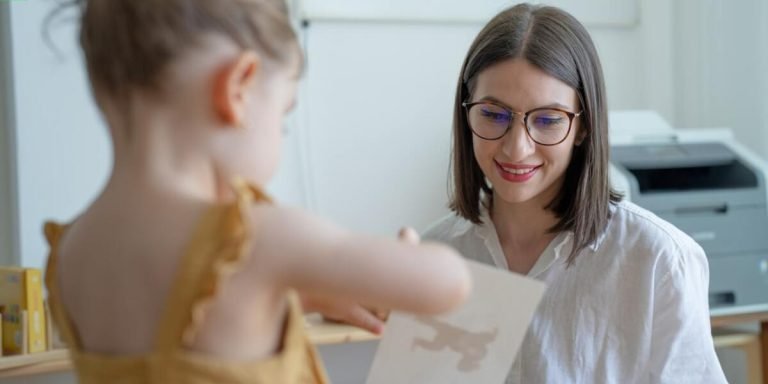IEP Laws and Regulations: Understanding Their Impact on Childhood Education.
Diving into the complex world of childhood education, it’s essential to grasp the significance and implications of IEP laws and regulations. The Individualized Education Program (IEP) is a crucial factor in shaping special needs educational strategies tailored for each unique learner. Making an effort to understand these laws can empower both teachers and parents alike, fostering more informed discussions about a child’s academic journey.
The purpose behind IEPs encompassing legislative guidelines isn’t just to enhance compliance but also to ensure every child gets equitable access to personalized learning opportunities that foster steady growth. Understanding how they impact your youngster’s education will arm you with valuable insights when navigating through Special Education Resources and Support mechanisms available – ultimately enhancing their overall schooling experience.
Did you know?
Despite being a legal requirement since 1975, more than half (52%) of parents in the U.S. have never heard about an Individualized Education Program (IEP) according to research by Understood.org and National PTA survey from 2019.
Understanding IEP Laws: The Foundation of Special Education Support
The Individuals with Disabilities Education Act (IDEA) is a critical part of special education, as it sets the parameters for Individualized Education Programs (IEPs). An understanding of IEP laws and regulations offers parents and educators necessary tools to ensure that children receive the right support. Knowing these rules is key in navigating your child’s or students’ learning journey effectively.
In today’s digital era, technology plays an integral role in reshaping traditional teaching methods. This integration allows teachers to deliver tailored instruction based on each student’s unique needs under IDEA and IEPs while adhering closely to existing laws and guidelines. As we move further into 2023, this blend of technology-enhanced personalized learning continues gaining momentum in special education.
Utilizing online resources provides tremendous help for both parents who want their kids included in regular classroom settings without undermining their specialized care plan requirements—another essential aspect provided by IEP laws—and educators seeking innovative ways offering extra educational support. Adapting technologies like adaptive software can offer alternative means for learners with different abilities, aiding them reach their full potential —a fundamental goal underlying every IEP law.
Key Provisions of the Individuals with Disabilities Education Act (IDEA)
The Individuals with Disabilities Education Act (IDEA) plays a crucial role in Special Education Resources and Support. It’s vital to understand its key provisions especially since we’re focused on the IEP laws and regulations that govern special education.
Firstly, IDEA ensures all children be granted a Free Appropriate Public Education (FAPE). This means schools are mandated by law to provide students with special needs access to an appropriate education at no cost, just like any other student. The details of what constitutes as “appropriate” is often defined through the individualized educational program or IEP process.
Secondly, under the IDEA act, each child receives personalized learning experiences according to their unique needs via Individualized Educational Programs (IEP). These tailor-made programs integrate technology into everyday activities targeting specific areas of improvement for every child based on their current ability levels.
Next is Parental Participation which upholds parents’ rights regarding decision-making about their child’s educational journey – from placement decisions down towards disciplinary actions. Parents should always have an active involvement within this legally binding document stating clear goals for progression over time using carefully selected assistive technologies.
Also embedded in these IEP laws and regulations is Least Restrictive Environment (LRE). Under LRE mandates, if possible without hindering academic progress or safety standards- kids having disabilities need schooling alongside non-disabled peers regularly integrating technology into lessons promoting interactive inclusion across various spaces.
How IEP Laws Enforce Educational Equity
As a cornerstone of special education support, the apt understanding of IEP (Individualized Education Program) laws and regulations is critical. These are legislated to protect the educational rights of children with disabilities, effectively enforcing educational equity.
The Individuals with Disabilities Education Act (IDEA) asserts that every child, regardless of their disability level, has the right to a free appropriate public education in America. Under this act:
1. An individual assessment process determined by professional educators is established for each student’s unique needs.
2. A written document termed as an Individualized Educational Plan(IEP) is prepared including specific goals achievable within a year & specialized services required for achieving them.
3. The program execution occurs in least restrictive environment enabling maximization of interaction between disabled & non-disabled peers.
Navigating Compliance: Strategies for Adhering to IEP Regulations
The labyrinth of IEP (Individualized Education Program) laws and regulations often seems daunting. However, implementing targeted strategies can make compliance a manageable task. Educators or parents invested in childhood education need to understand the legal terrain to make better decisions for the welfare of special needs students.
2023 brings a renewed focus on inclusive practices that prioritize individual learning requirements, such as sensory aids or adapted physical instruction. It is crucial to stay abreast of changes in government-mandated compliance.
Technology continues serving as an indispensable tool within this environment increasingly reliant upon digital solutions shaped around personalized learning experiences. Aided by advancements like AI-driven analytics software capable of tracking student progress meticulously and adaptive e-learning platforms catering to different learners’ specificities comprehensively ‒ technology integration offers innovative ways in achieving IEP goals effectively while adhering strictly to all governing laws.
Simultaneously acting as conduits ensuring educational access equity and fostering engagement through interactive interfaces designed aligning with various cognitive styles ‒ integrating technological resources into traditional teaching methodologies accentuates how innovation contributes significantly towards creating impactful Special Education Resource systems globally recognised today.
Developing Compliant and Effective Individualized Education Programs
Understanding and implementing “iep laws and regulations” in the context of individualized education programs (IEPs) can seem daunting. However, with a strategic approach grounded in current best practices for 2023, it becomes manageable.
Firstly, IEPs should always be tailored to meet each student’s unique needs rather than attempting to fit the child into an existing educational program. This personalization not only complies with iep laws but also ensures that every child can maximize their learning potential.
It is essential to keep abreast of changes or updates related to these regulations as they are designed aligning with ever-evolving insights on how children learn. Stay updated by regularly visiting reputable Special Education Resources websites or subscribing newsletters from pertinent organizations like National Center for Learning Disabilities(NCLD) and Council for Exceptional Children(CEC).
Involve professionals who have mastery over both subject matter and special education strategies while developing your school’s IEPs. Incorporate technology where possible: using guided software which aids teachers drafting effective & compliant Individual Education Programs quickly turn this task from overwhelming hurdle into smooth process.
Ensure adequate staff training on new technologies being introduced integrating them meaningfully within curriculum framework having specific alignment with objectives defined within some students’ individualized plans increases compliance quotient significantly alongside increasing effectiveness of implemented interventions aligned under respective student’s plan.
Monitoring Progress and Ensuring Accountability in Special Education
In the current context of 2023, navigating compliance in special education is a task that involves much complexity. Particularly when it comes to adhering to Individualized Education Program (IEP) regulations, there are several strategies parents and educators can adopt.
A crucial aspect within this framework is monitoring progress and ensuring accountability. IEP laws and regulations mandate consistent evaluations of students’ growth through precise criteria. It helps keep everyone involved – from teachers and therapists to parents – on their toes advocating for the student’s best interest.
To start with, establish benchmarks based on individual capabilities rather than generic standards since every learner with special needs has an exclusive set of challenges and strengths. Technology integration plays a significant role here; digital platforms make personalized learning possible by providing resources tailored specifically towards each student’s unique needs.
Next, school staff members, both direct and indirect contacts of the child, should regularly communicate. They should discuss daily accomplishments or struggles during recess, observe behavioral changes in the cafeteria, and share academic achievements.
Another effective method includes maintaining detailed records regarding all aspects related not just academically but also socially speaking which might have bearing upon overall development process thus ensuring transparency as well high levels accuracy while evaluating success rate against predetermined goals/objectives defined initially within given timeframe according existing national/international norms/guidelines pertaining especially those falling category entitled ‘Special Education Resources Support Services’.
Collaborative Approaches to Enhance Resource Allocation Under IEP Guidelines
Over the years, a significant approach to improving children’s education under IEP (Individualized Education Program) laws and regulations has emerged: collaborating with various platforms for optimal resource allocation. Inclusive classrooms are no longer considered an ambitious afterthought in 2023; rather, they’ve become integral parts of our educational ecosystem.
Collaborative initiatives truly shine when it involves technology integration. By using modern technological solutions like adaptive learning software or assistive communication tools that can be tailored to each learner’s unique needs, we can breathe new life into the curriculum set by IEP guidelines. They cater more efficiently to students’ individualist requirements while fostering their intellectual growth amidst diverse peers.
Shadowing this reform is another essential player- parents as well as educators who have shown remarkable adaptability towards these regulatory changes over time. When appropriately harnessed and combined with available resources within special education programs, collaboration results not only in increased scholastic success but also boosts confidence among stakeholders taking part in refining systems established under existing iep laws and regulations.
Role of Educators, Parents, and Administrators in Optimizing Resources
The precise and efficient allocation of resources under the Individualized Education Program (IEP) is a shared responsibility. In implementing iep laws and regulations, educators, parents, and administrators play distinctive but interconnected roles in maximizing special education resources for optimum child development.
Educators serve as the frontliners in this process. They are tasked with identifying children who might require an individualized approach to learning. The teachers’ keen observations skills can pinpoint developmental delays or learning disabilities that might go unnoticed without professional insight.
Once these students have been identified, it’s crucial for educators to relay their findings promptly so preparations can be made towards designing appropriate IEPs.
Administrators meanwhile ensure infrastructural integrity aligning institutional policies seamlessly with existing legal guidelines concerning Special Needs Education whilst allocating funds resourcefully where needed most .They maintain open communication channels among staff members promoting transparency hence fostering collaborative initiatives aimed at effective utilization of available facilities ,therapies alongside technological interventions .
Leveraging Community Partnerships for Comprehensive Support Services
Establishing effective partnerships within the community present a holistic solution for comprehensive support services under Individualized Education Program (IEP) laws and regulations. To ensure every child has access to an optimum learning environment, it’s essential that parents, educators, administrators and local organizations collaborate in resource allocation.
In reference to technology integration in education: Community alliances are particularly valuable when establishing state-of-the-art facilities or implementing innovative tech programs designed for special needs students. This symbiotic relationship can directly impact your school’s capacity to meet IEP laws and regulations effectively.
Educational enrichment endeavors speak volumes about this partnership success story. Local businesses often willingly sponsor educational tools like laptops or tablets which greatly aid special needs children in their learning journey. These contributions go far beyond materialistic aids — they’re investments into building an inclusive society where each individual thrives irrespective of learning differences.
Additionally, professional communities offer another win-win opportunity by providing training sessions on integrating technology with teaching methodologies suited for IEPs. Teachers reinforce their skills through these workshops while diversifying teaching techniques — promoting inclusivity throughout the curriculum delivery process.
Moreover, nonprofit organizations partnering up with schools provide volunteer tutors equipped with expertise as per IEP guidelines offering one-on-one assistance – enhancing student outcomes markedly along multiple lines of academic progressions including improved reading levels & comprehension capabilities too!
Conclusion
Understanding IEP laws and regulations is indeed akin to deciphering a complex puzzle. But with the right information, support, and patience, these laws can be your means of ensuring quality education for your little ones. As you navigate this labyrinth of legalities remember – it’s not about being overwhelmed by the complexities but focusing on how these guidelines are instrumental in tailoring an educative journey specific to your child’s unique needs.
We hope that our blog helped shed some light on IEP Laws and Regulations for you. Remember – knowledge is power! Feel free at any time to explore other insightful articles around childhood education available throughout our website.
We’re keenly dedicated to providing resources which empower parents & educators alike in crafting impactful educational experiences for children everywhere! Keep visiting us as we continue creating content that enlightens every step towards educating future leaders effectively.







